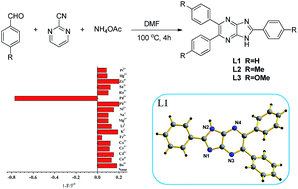Synthesis and characterization on novel fluorescent sensors for Pd2+/Pd0 with high selectivity†
Abstract
Novel fluorescent sensors L1–L3 based on triaryl 1H-imidazo[4,5-b]pyrazine have been synthesized through a new and simple route from inexpensive and readily available materials in one pot. They exhibited high selectivity for palladium detection (oxidation states of 0 and +2) based on the fluorescence quenching effect.


 Please wait while we load your content...
Please wait while we load your content...